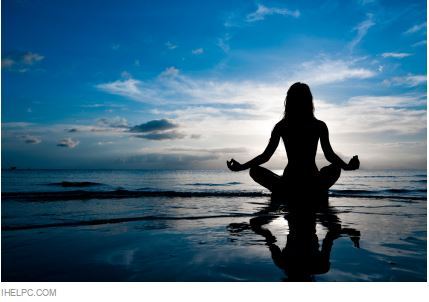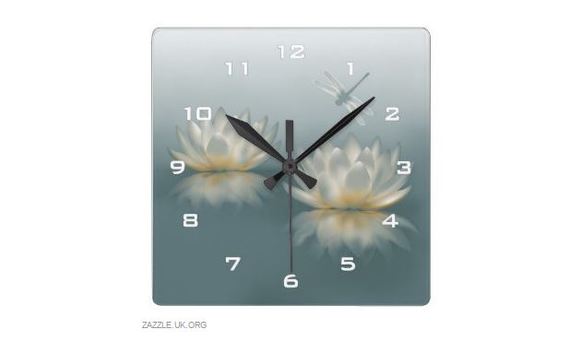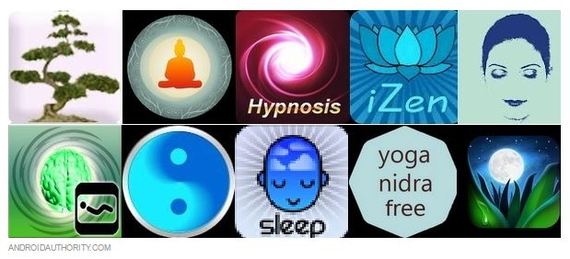Meditation is often associated with spirituality, being an important aspect of spiritual traditions such as Buddhism and Hinduism. But meditation has also grown in popularity among a more diverse range of people, spreading from a largely spiritual practice into fairly widespread use in the secular world.
The secular benefits of meditation on the body and mind have been widely documented in science, and plenty of people are taking up meditation as a hobby for health or enjoyment nowadays rather than any kind of religious practice. Some of the benefits of meditation include stress reduction, a stronger immune system, better mood, and improvements in memory. Meditation has also been shown to increase willpower to help people meet their goals.
Don't get me wrong, you shouldn't consider meditation to be a magic bullet that will magically solve all of your problems. But with all of these benefits, it is definitely worth giving a try.
Much like exercise, which trains the body, the training of the mind through meditation is most effective when done regularly. The hardest part of doing this is establishing it as a regular habit. So what are some good ways to get into the habit of meditating?
How to Meditate
The first thing you need in order to get into the habit of meditating is obviously to know how to meditate. While some readers may already know how, let's cover this for those who may not.
There are numerous ways to meditate, Buddhism alone has about 40 different techniques described in the Visuddhimagga. Don't let that number frighten you though, a lot of these techniques aren't practical nowadays, for example some involve encouraging worldly detachment by focusing on some kind of rotten object such as a skeleton.
There are just a handful of popular practical meditation techniques so don't sweat the number of different ways to meditate. Not only that, most meditation organizations will provide instructions on how to do their meditation technique online for free, so finding a good practical technique doesn't take much effort. You can even learn to meditate from watching a TED Talk.
Probably one of the more popular meditation techniques is breathing meditation, or mindfulness of the breath. Other common techniques include loving-kindness meditation and walking meditation. There are also some more specific techniques such as the recently popular Vipassana meditation and the famous Chakra Meditation.
My personal favorite is a meditation technique called Dhammakaya, which is closely related to breathing meditation. The focus is on 7 points within the body largely along the path of the breath, its main point of focus however is a point in the center of the stomach just above the navel called the "7th base of the mind". You can also find this point by taking a deep breathe and finding the point where you feel your breathe end. One reason I like this method of meditation is that it's easy to do when you're doing other tasks besides sitting still. All you have to do is gently place your mind at the 7th base while carrying on normal activities. This technique of course, is my own personal preference and you are free to try any technique you feel most comfortable with. If you are curious about it however, you can find instructions here.
A good tip to keep in mind is that experiences change with circumstances. For instance, while Dhammakaya meditation is my preferred, I have had sessions where I get a better experience using breathing meditation instead. Another nice meditation tip is keeping a meditation journal to write down your experiences. It's a great way to track your progress and make use of any tips that might come in handy later. You should note that each time you meditate, you shouldn't hold on to expectations based on past experiences or ambition. The key is not to force, but to allow your mind to be peaceful and joyous.
Set a Daily Goal
A prominent meditation master was once asked, "How many times a day do you meditate?"
This was his answer:
"I meditate twice a day. Only twice. I meditate when my eyes are open. And I meditate when my eyes are closed."
This is, to say the least, probably the ultimate goal one would like to reach in getting into the habit of meditating. Since you can be present and aware at any time, meditating all the time is indeed possible, but starters should probably begin with smaller goals at first.
Much like the exercise schedules of the modern era, a good way to develop a meditation schedule is to ease your way into it with increasing increments. If you are starting from no meditation at all, you can start with maybe 10 minutes of sitting meditation a day and then increase by increments of 5 minutes or so every week. Once you reach a solid amount of daily sitting meditation, an hour or so would be a good benchmark, you will likely notice some positive feelings not just during meditation, but before and after also.
From there you can focus on incorporating meditation into your daily life. The most efficient way to maximize benefits from meditation is to not just focus on sitting meditation, but to do walking meditation and other forms of meditation while doing other activities also. Whether it is staying aware, repeating a mantra, or gently keeping your mind at the 7th base at all times; there are plenty of ways to integrate meditation with your daily tasks. Meditating with your eyes open is not much more difficult than meditating with your eyes closed.
Find a Regular Time
The best way to get into the habit of meditating is to make it a habit to meditate following your routine tasks. Meditating right after work or class for example is a great way to develop your meditation routine and ensure you never neglect the practice. Another good one is meditating right before you go to sleep or right after you wake up. Meditation has been known to help with sleep, and the mind tends to be very quiet right after waking up.
Another advantage of meditating before and after bed is that humans need to sleep everyday (for the most part), and if you make it a habit to meditate at such times it ensures you are training your mind consistently. Meditating before or after other daily tasks such as meals would also work.
Measuring meditation doesn't have to be restricted to time either, those who use mantras to aid with meditation can count mantras in their free time throughout the day and set mantra count goals. The mantra I use is "Samma Arahung", a Pali mantra, but there are plenty of other good ones you can use even in English such as "inner peace" or "clear and bright". Mantras are great for meditators to calm their mind and clear it of any chit-chat or wandering.
You can count mantras yourself, for instance "inner peace one, inner peace two, inner peace three etc...", or use tools like a tally counter. Simple tally counters can be bought online or in thrift stores for pretty cheap, and it's great to use if you want to do mantra meditation while doing other activities. Getting to a few thousand mantras in a day isn't as hard as it looks, you can get several hundred in just waiting for your late friend or waiting to be seated at a restaurant.
Enlist the help of technology
A great way to help with getting into the habit of meditating regularly is using technology. There are plenty of great apps you can find online to help you with the practice.
For those looking for a simple meditation timer, there are quite a few good ones that have standard features like reminders, a timer and progress tracking. Meditate Free Meditation Timer from Mindcore covers these basic features. Insight Timer provides guided meditations, music to go along with your meditation, as well as a pretty unique system where you can see who and how many are also meditating with the app. A great way to develop a habit of meditation if you respond to social feedback well and have some interested friends.
For those looking for a program to get started with, there are apps for those also. Calm has a pretty extensive range of meditation programs available for those interested in trying out lots of different methods and the more famous Headspace has a 10 part series for free on its app. There's even an app called Simple Habit, designed to help incorporate meditation into your daily life.
I'm an old fashioned kind of person so I tend to just stick to the more basic meditation timers, but just mentioning these programs for those who may be interested.
Go on a Retreat
Like all routines, whether it be working out, training for the olympics or practicing an instrument; the hardest part is getting started. Once the the power of habit kicks in, following through is pretty easy.
A good way to get started on, or to improve your habit of meditating is to go on a meditation retreat. Thanks to the power of habit, immersing yourself in nothing but meditation for a few days is a great way to catapult yourself into a solid routine if you are serious about later developing one at home. What's also great is that meditation retreats tend to be reasonably cheap for reputable meditation organizations. A few that I know of are S.N. Goenka's Vipassana meditation course which consists of a ten day retreat, and the Middle Way Meditation Retreat for those who don't mind traveling.
Many Hindu or Buddhist temples will also allow guests to stay overnight and meditate with the monastics or would host retreats at little or no cost. This would only be an option for those who don't mind the religious rules and customs integrated with being at a monastery. If you are okay with such a circumstance, you can always try to contact a local Buddhist or Hindu temple to see if such programs are offered.
For those who want an easier way to get the benefits of a meditation retreat, without the hassle or cost of going to one physically, there are online options available also. Peace Revolution offers a free 42-day online program that can be done right in your home, more than enough time to get that habit of meditation developed. Peace Revolution also offers various free and low-cost fellowships at some very appealing meditation sites for qualified candidates who complete their program. A pretty nice perk for just sitting at your computer each day.







